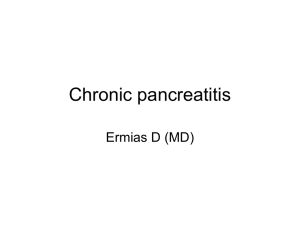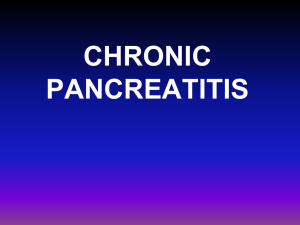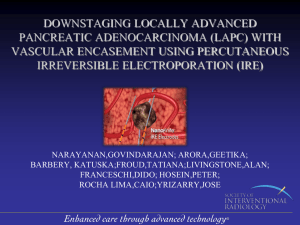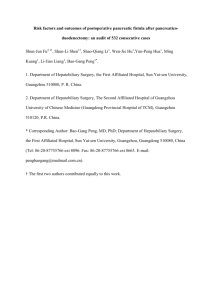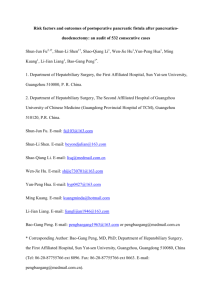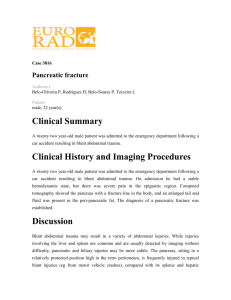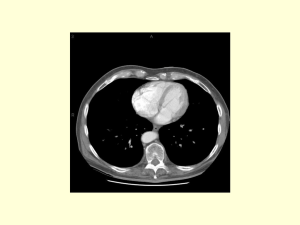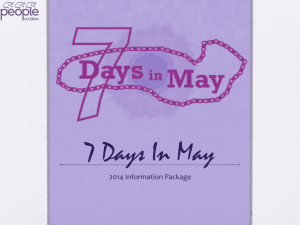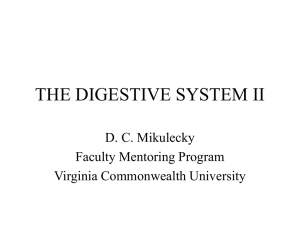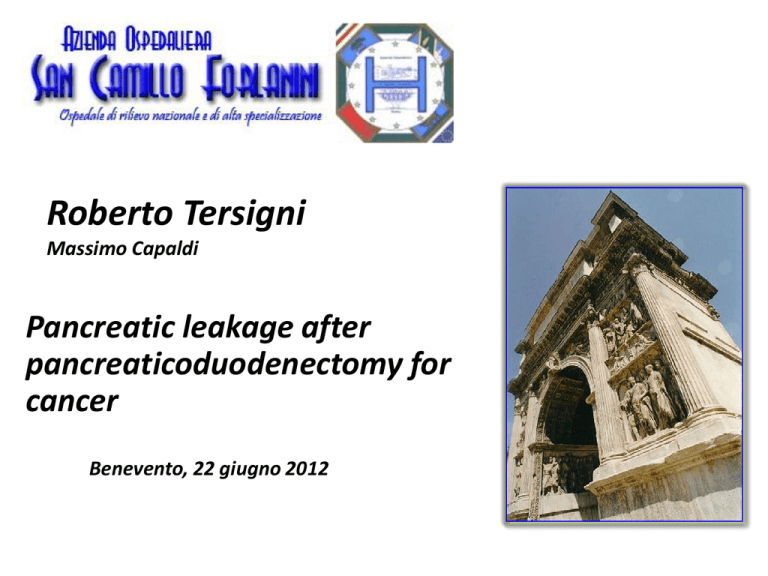
Roberto Tersigni
Massimo Capaldi
Pancreatic leakage after
pancreaticoduodenectomy for
cancer
Benevento, 22 giugno 2012
PANCREATICODUODENECTOMY
FOR CANCER
Pancreaticoduodenectomy is the treatment of
choice for patients with resectable carcinoma of
the pancreatic head and periampullary region
Morbidity is still around 20% to 50%
Mortality is < 5 % in high volume centers
Mortality is 12,5% in Italy
Pancreas
Duodenum
Intrapancreatic Biliary Duct
Ampulla of Vater
Radical Limphadenectomy
Anomalous Vessels
Arterial and Venous involvement
Venous infiltration > 180 °
Venous infiltration < 180°
Secondary Pancreatic Head Cancer
IntraOperativeRadioTherapy
Abdominal complications after
duodenopancreatic resection
TYPE OF COMPLICATION
CLINICAL DEFINITION
Pancreatic Fistula
Output rich in amylase, stadiation by ISGPF
Abdominal collection
Collection of fluid measuring at least 5 cm in
diameter
Haemorrhage
Requirement of > 3 Units of pRBC/ 1000 ml
Delayed gastric empting
Nasogastric tube decompression for >10days
Acute pancreatitis
At least a 3 fold increase of normal plasma
amylase or lipase 48h after the operation
PANCREATIC FISTULA
•Pancreatic leakage is the most important complication
from which 40% of patients death are the result of septic
or haemorrhagic complications
•The incidence of Pancreatic Fistula varies from 10% to
25% without reduction in the past decade
•Whipple reported 19,5% Fistula rate more than 50 years
ago
Origin and Definition
of
Pancreatic Anastomotic Fistula
ORIGIN:
Main Pancreatic Duct
Pancreatic cut surface
DEFINITION: (ISGPF) Any measurable volume of
fluid after p.o. day 3 with amylase
content greater than 3 times the
serum amylase activity
Pancreatic anastomotic fistula severity
Grade
•A
•Transient, asimptomatic fistula with elevated drain amylase
without clinical relevance
•B
•Symptomatic fistula that require diagnostic evaluation and
therapeutic management and prolongation of hospital stay
•C
•Fistula with severe clinical impact that require aggressive
diagnostic and therapeutic management (percutaneous drains
or re-surgery). Possibility of mortality
C. MAX SCHMIDT HPB SURGERY 2009
Classical risk factors associated with pancreatic Fistula in 510
pancreaticoduodenectomies
P-VALUE
n.s.
M DEMOGRAPHICS
•PATIENT
F
•PATHOLOGY
Pancreatic lesions
Periampullary lesions
•PANCREATIC TEXTURE
•PANCREATIC DUCT SIZE
Soft
Firm
Hard
<0,001
<3mm
3-5 mm
> 5 mm
<0,001
PREANASTOMOTIC or POSTOPERATIVE STENT
•TYPE ANASTOMOSIS
•SURGEON VOLUME
<0,001
n.s.
<0,001
<0,001
RANDOMIZED CONTROLLED TRIALS COMPARING
PANCREATICOGASTROSTOMY VS PANCREATICOJEJUNOSTOMY
Source
Type of
Study
PG vs PJ Pancreatic
Fistula
n°
Morbidity
Mortality
(%PG vs %PJ)
(%PG vs %PJ)
(%PG vs %PJ)
Yeo 1995
Single-centre
trial
73 vs 72
12 vs 11
49 vs 43
0 vs 0
Duffas
2005
Multicenter
trial
81 vs 68
16 vs 20
46 vs 47
12 vs 10
Bassi 2005
Single-centre
trial
69 vs 82
13 vs 16
29 vs 39
0 vs 1
Selection of anastomotic technique
according to
pancreatic texture and duct size
Texture Duct size
•SOFT
< 3 mm
•FIRM
3 – 5 mm
•HARD
>5 mm
Anastomotic technique
Duct occlusion – Pancreaticojejunostomy - Pancreaticogastrostomy
Duct to mucosa
Pancreaticojejunostomy
Pancreaticogastrostomy
Wirsung’s occlusion
with Cianoacrilate (Glubran 2®)
Biliodigestive Anastomosis
End to Side PJ anastomosis
Duct to Mucosa PJ anastomosis
Double Major Pancreatic Duct
Management of Pancreatic Fistula
No clinical signs
Worsening clinical
signs
Conservative
management
Re-Surgery
Delayed Haemorrhage
Emergency resuscitative
measures
Decreasing output
Endoscopy
Angiography
Improving
condition
Failure to control bleed
Increasing output
Worsening condition
Drains
Worsening clinical
signs
Improving condition
Emergency Re-surgery
Duodenopancreatectomy
Total
150
Classical Whipple
46
Pylorus Preserving 104
Management of Pancreatic Stump
Management
n°
Years
Fistula %
End to End PJ anastomosis
32
2000-2003
15.6
A
End to Side PJ anastomosis
44
2003-2007
13.6
B
Duct Occlusion
33
2007-2010
50
C
Duct to Mucosa anastomosis
41
2010-2012
0
D
Tersigni et al.
Postoperative Course, Complications and Outcome
Main
Abdominal
complications
A
B
C
D
Overall / %
Pancreatic
Fistula
4
6
15
0
25 (16,6)
Grade A
2
4
11
0
17 (68)
Grade B
1
2
3
0
6 (24)
Grade C
1
0
1
0
2 (8)
Biliary
Fistula
0
0
0
0
Abscess
2
0
0
0
2 (1,3)
Bleeding
2
0
2
1
0
0
0
0
4 (2,6)
1 (0,7)
Bowel
Obstruction
1
0
0
0
1 (0,7)
Other
2
1
1
0
4 (2,6)
Post Op.
Mortality
5
3
1
0
9 (6,0)
Acute
pancreatitis
Tersigni et al.
Periampullary and pancreatic neoplasms
Period
DCP
Mortality Pts. (%)
2000 – 2012
150
9
(6 %)
2005 - 2012
115
2 (1.75 %)
Tersigni et al.
Grazie per l’attenzione

